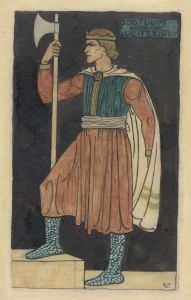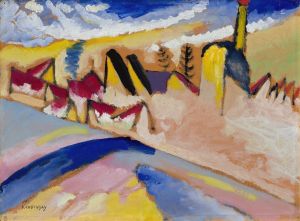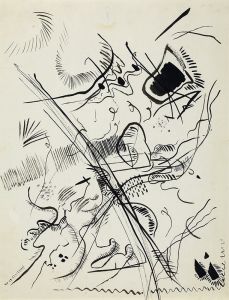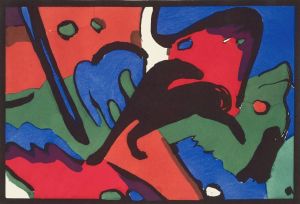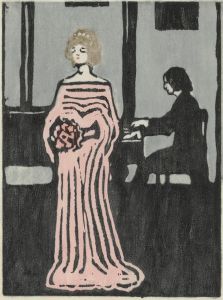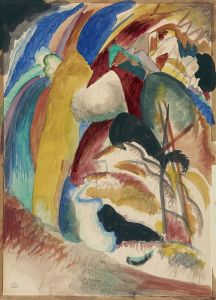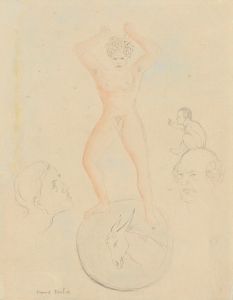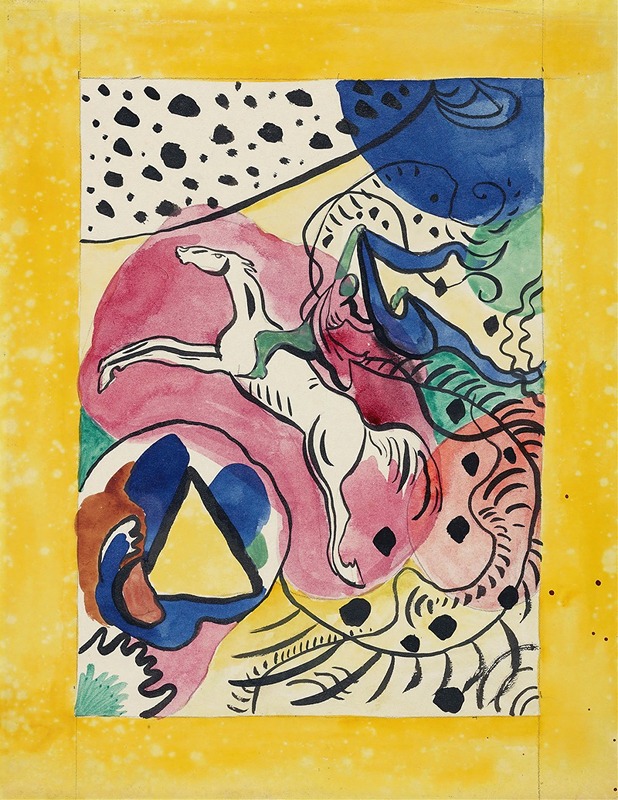
Design for the cover of the almanac ‘The Blue Rider’
A hand-painted replica of Wassily Kandinsky’s masterpiece Design for the cover of the almanac ‘The Blue Rider’, meticulously crafted by professional artists to capture the true essence of the original. Each piece is created with museum-quality canvas and rare mineral pigments, carefully painted by experienced artists with delicate brushstrokes and rich, layered colors to perfectly recreate the texture of the original artwork. Unlike machine-printed reproductions, this hand-painted version brings the painting to life, infused with the artist’s emotions and skill in every stroke. Whether for personal collection or home decoration, it instantly elevates the artistic atmosphere of any space.
The cover design for the almanac "The Blue Rider" (Der Blaue Reiter) was created by the Russian painter Wassily Kandinsky, a pivotal figure in the development of abstract art. "The Blue Rider" was not just an almanac but a significant publication that played a crucial role in the expressionist movement in early 20th-century art. It was first published in 1912 and served as a platform for artists to express their ideas and showcase their works, emphasizing the spiritual and symbolic aspects of art.
Kandinsky, along with fellow artist Franz Marc, founded the Blue Rider group in 1911 in Munich, Germany. The group was named after one of Kandinsky's paintings, which depicted a rider in blue, symbolizing the spiritual journey and the transcendence of the material world. The almanac was a manifestation of the group's ideals, aiming to break away from traditional artistic conventions and explore new forms of expression.
The cover of "The Blue Rider" almanac is a reflection of Kandinsky's evolving artistic philosophy. It features abstract elements that hint at the themes explored within the publication. Kandinsky's use of color and form was intended to evoke emotional responses and convey deeper meanings beyond the visible. The cover design is characterized by its simplicity and abstraction, which were innovative at the time and indicative of Kandinsky's move towards non-representational art.
Kandinsky believed that art should transcend the physical world and express the inner life of the artist. This belief is evident in the cover design, which eschews detailed representation in favor of abstract forms and vibrant colors. The design aligns with Kandinsky's theories on the spiritual nature of art, as outlined in his influential book "Concerning the Spiritual in Art," published in 1911. In this book, Kandinsky argued that colors and shapes could evoke emotions and spiritual experiences, a concept that is visually represented in the cover of "The Blue Rider."
The almanac itself included essays, artworks, and musical scores from various artists and composers, reflecting the interdisciplinary nature of the Blue Rider group. Contributors included notable figures such as Paul Klee, Arnold Schoenberg, and August Macke, among others. The publication was a testament to the collaborative spirit of the group and their commitment to exploring the connections between different art forms.
"The Blue Rider" almanac and its cover design by Kandinsky are considered milestones in the history of modern art. They represent a shift towards abstraction and the exploration of art's spiritual dimensions. Kandinsky's work on the cover is a precursor to his later, more fully developed abstract compositions, which would go on to influence generations of artists.
In summary, the cover design for "The Blue Rider" almanac by Wassily Kandinsky is a significant work that encapsulates the ideals of the Blue Rider group and marks a pivotal moment in the evolution of abstract art. Through its abstract forms and vibrant colors, the cover reflects Kandinsky's belief in the spiritual power of art and its ability to transcend the material world.





